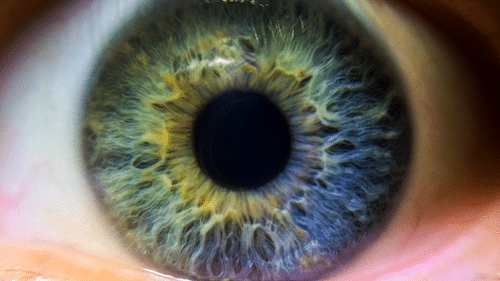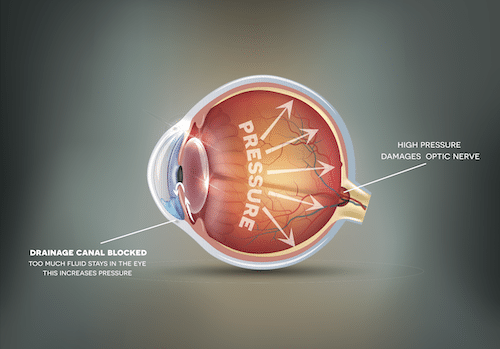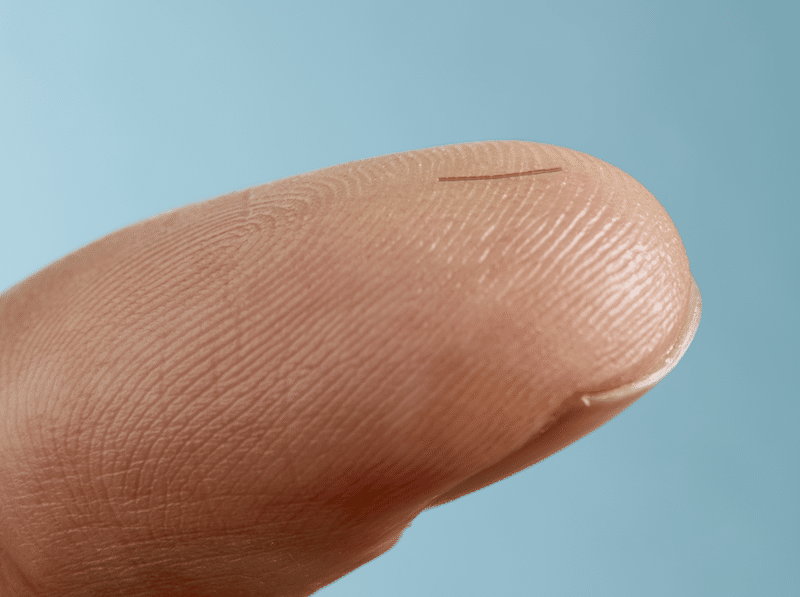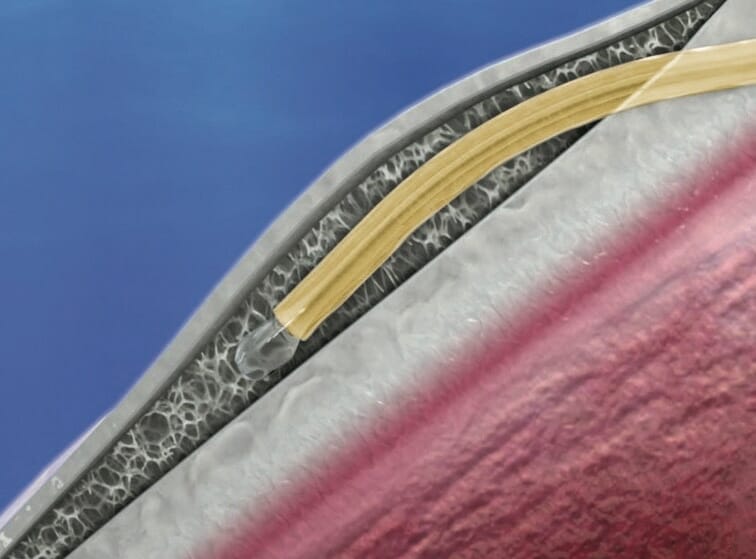
A new, minimally invasive procedure for the treatment of glaucoma
The XEN Gel Implant is a simple and effective treatment that can slow or stop the progression of glaucoma by lowering the pressure in your eye

What is glaucoma?
Glaucoma is a group of eye diseases commonly caused by an increased pressure inside the eye caused by a buildup of excess fluid. Treatment is aimed at lowering pressure to prevent further vision loss.

What causes glaucoma?
If the drainage system is blocked or partially obstructed, the natural pressure in your eye may increase. When eye pressure becomes too high, the optic nerve can become damaged causing blurred vision, and if left untreated, vision loss or blindness.

Eye drops aren't always enough
Eye drops don't always reduce the pressure to the low levels needed to help prevent vision loss. This is why surgery may be recommended.
The XEN Gel Implant is intended to reduce eye pressure in people with primary open angle glaucoma where previous medical treatments have failed.
Introducing the XEN Gel Implant for Glaucoma
An effective treatment for glaucoma.

What is the XEN Implant?
The XEN Implant is a new way to treat glaucoma. It is a type of minimally invasive glaucoma surgery or MIGS. It is a very small tube implant shunt made of soft gelatine material. The implant is as thin as a strand of human hair.

How does it work?
The XEN Implant creates a small channel to drain the fluid that is causing high eye pressure. By helping to keep your eye pressure under control, the XEN implant aims to maintain your eyesight, so you can keep doing the things you love.
Sitting just under the surface of your eye, the XEN Implant is so small you are unlikely to see or feel it.
Is XEN Implant right for me?
There are many ways to treat glaucoma, such as eye drops, laser, or surgery. Make an appointment with Dr Kerr to see what is the best option for treating your glaucoma.
The XEN Gel Stent is designed to treat glaucoma where eye drops have failed to lower eye pressure sufficiently

Dr Nathan Kerr
Melbourne Glaucoma Specialist SurgeonXEN Implant
Advantagesnew
- Lowers eye pressure
- Less invasive
- Faster recovery
- Designed to be safer
Who may benefit from the XEN Implant?
It is necessary to first undergo an eye examination to determine if you are eligible for the XEN Implant. The XEN Implant is an effective surgical option for many glaucoma patients. If you fit into any of the following categories, you may be a candidate for the XEN Implant:
Primary open-angle glaucoma
If you have primary open-angle, pseudoexfoliative, or pigmentary glaucoma.
Struggling with eye drops
The XEN Implant is designed for people whose eye pressure is higher than it should be, despite using glaucoma eye drops.
Have had laser
XEN can also be used in patients who have had laser treatment or previous glaucoma surgery.
Desire to avoid more invasive surgery
The XEN procedure is faster, more straightforward, and less invasive than traditional operations for glaucoma.
Experienced XEN Surgeon
Dr Nathan Kerr is one of Australia's leading specialists in minimally invasive cataract and glaucoma surgery
Book an appointment
Frequently asked questions
Discover if the XEN Implant is right for you.
What is the XEN Glaucoma Gel Implant?
The XEN Implant is a very small flexible tube made of porcine gelatin that creates a new pathway for fluid to drain from the eye, reducing eye pressure.
The XEN Implant is 6 mm in length and nearly as thin as a strand of human hair. The gelatin material is well accepted by the human body.
How does the XEN Implant work?
Glaucoma is commonly associated with a buildup of fluid pressure inside the eye. Eye pressure increases because the eye’s fluid drainage channels become blocked.
The XEN Gel Implant is placed in your eye to make a new permanent pathway to allow excess fluid to drain from inside the eye into a small blister (or bleb) under the skin of the eye (conjunctiva), just under the upper eyelid. You will not normally see the bleb. However, if you look in the mirror and raise your upper eyelid, you may be able to see the bleb. The fluid drained from inside the eye is different from tears.
Who is suitable for a XEN Implant?
The XEN Gel Stent is best suited to patients with open angle glaucoma where eye pressures cannot be adequately lowered with eye drops or laser.
The XEN Gel Stent can be used in patients with mild and moderate glaucoma but should be used with caution in patients with very advanced glaucoma.
What are the benefits of the XEN Implant?
The XEN Gel Implant is designed to lower eye pressure and reduce the risk of vision loss from glaucoma. The procedure to insert the XEN Gel Implant is faster, more straightforward, and less invasive than traditional operations for glaucoma. The procedure is performed through a microscopic incision in the clear window of the eye (cornea). Unlike traditional surgery, scissors and stitches are not required.
In a clinical trial, eye pressure was reduced by 30% at 1 year in patients who had the XEN Gel Implant and medication use was reduced by 75%. In some people the XEN Gel Implant may become blocked or need repositioning. This can often be done in a quick and painless in-office procedure. Occasionally a return to theatre may be required.
The XEN Gel Implant will not cure your glaucoma, reverse any damage already caused by glaucoma, or bring back any lost vision.
What does the XEN Implant operation involve?
The operation is usually performed under a local anaesthetic, meaning that you are awake but your eye is numb so you will not feel anything. Your eye will be numbed with eye drops and then a small injection will be given around your eye. The injection may cause a pressure sensation and brief discomfort. You will have the option of requesting light sedation. The local anaesthetic takes several hours to wear off and may affect your vision during this time.
The procedure can be performed by itself or combined with cataract surgery.
The XEN Gel Implant is injected through a small self-sealing incision in the clear part of the eye using a special injector. The procedure takes approximately 10 minutes.
During the procedure a medication called mitomycin C may be applied. This is used to reduce scarring and is designed to help enhance the long term success of the operation.
At the end of the procedure your operated eye will be padded and covered with an eye shield. If your unoperated eye does not see well, your operated eye may not be padded and instead covered with a clear plastic shield.
You will usually be able to go home the same day as your operation. Most patients will need to be examined the day after surgery.
How soon will I recover after the XEN Implant?
Following surgery your eye may be slightly blood shot and swollen for a few days. Your vision may also be blurry for 1 – 2 weeks after the procedure. You may read and watch television; these activities will not harm your eye.
You will generally have no sensation from the presence of the bleb. You will be given new anti-inflammatory and antibiotic eye drops to prevent inflammation and infection. The anti-inflammatory drops will normally need to be continued for 2-3 months.
The XEN Gel Implant will begin to work straight away to lower your eye pressure and you can stop taking your glaucoma drops in the operated eye. Any drops you use in your other eye must be continued as normal.
As with all eye surgery, you should avoid strenuous activity for the first month including swimming, tennis, jogging, and contact sports. Most people take 1 – 2 weeks off work after surgery, however the length of time will depend on the nature of your work.
You will be asked to wear a shield over your eye at night for the first week or so, to prevent accidental injury to your eye whilst you are asleep.
It is safe to fly after surgery, however you will need to be seen regularly by your surgeon in the early post-operative period.
How long will the XEN Implant last?
The XEN Implant is designed to stay in the eye permanently as a new outflow pathway to reduce eye pressure.
Will I still need to use glaucoma drops?
Most people who have the XEN Implant can use less glaucoma eye drops. After a year with the XEN Implant, around half of patients in a study still had no need to use glaucoma eye drops at all.
What are the risks?
Serious problems such as bleeding or infection are fortunately rare.
There is a risk the Implant could become blocked or come out of position. If the tube becomes blocked you may require a minor procedure in the outpatient clinic or to return to theatre.
In some cases the XEN Gel Implant may not lower eye pressure or its effect may wear off with time. If the XEN Gel Implant fails to lower your eye pressure it will not create any additional harm to your eye. However, you may need to restart your glaucoma medications or have further procedures to control your eye pressure.
Rarely, you may be aware of the drainage bleb. If this is causing pain or discomfort, steps may need to be taken to make the bleb more comfortable.
What are the alternatives?
The alternatives to XEN Gel Stent insertion are traditional glaucoma operations such as trabeculectomy or aqueous shunt implantation.
If you liked this page, please share it on social media to help people with glaucoma know about XEN.
Australia's First
Dr Nathan Kerr was the first Australian surgeon to be certified in the use of the XEN Implant.
Read more

